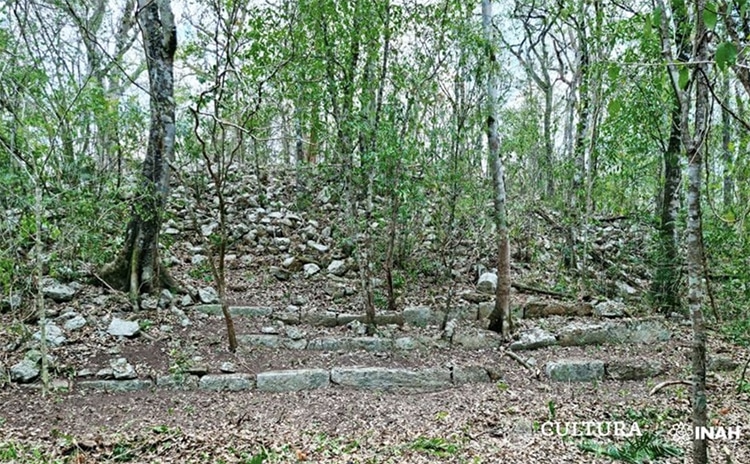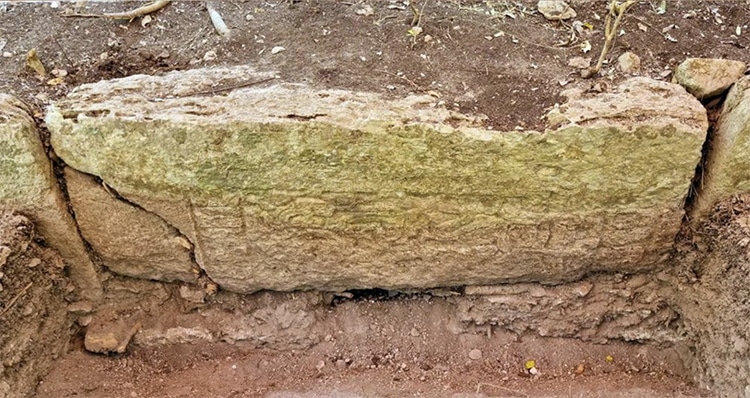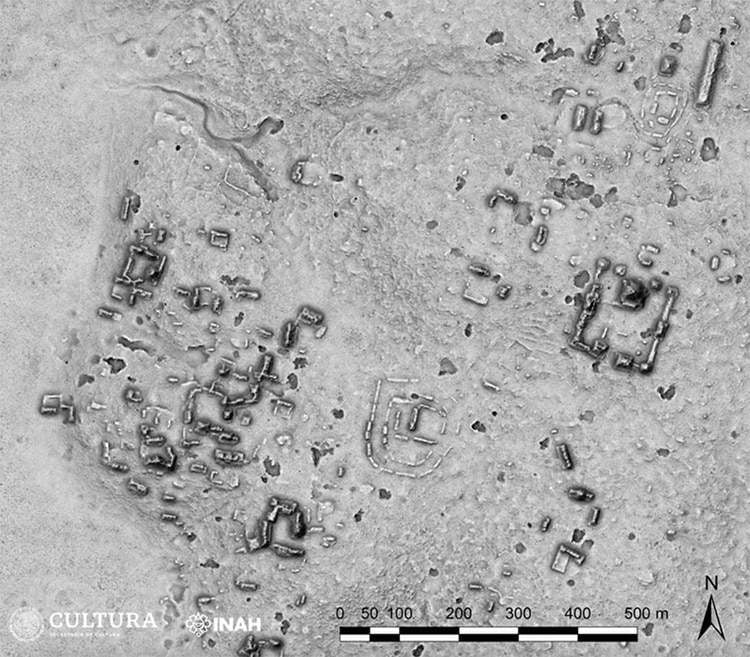
Ruins of a building and staircase. (Photo: Ivan Šprajc via National Institute of Anthropology and History)
Thousands of miles of dense, lush jungle cover much of Central America. The jungle hides many incredible creatures and biodiversity, but it also obscures important human-made structures. Beneath the greenery, hundreds of ruins of buildings built by the ancient Maya and Olmec peoples have been discovered in recent decades using modern technology. The use of light detection and ranging (LiDAR) scanning technology to sweep digital eyes over thousands of acres quickly, these sites emerge from landscape and history. Most recently, Mexico’s National Institute of Anthropology and History (INAH) has announced the discovery of a 1,000-year-old Mayan city in the Balamkú ecological reserve on the Yucatán Peninsula.
The city was discovered with LiDAR in March 2023. The images taken by the technology showed buildings as “topography” under the jungle cover. Lead archaeologist of the project, Ivan Šprajc, set about searching through the jungle—an incredible search covering an area larger than the European country of Luxembourg. On the high ground of a peninsula, the site spans over 123 acres with the remains of large buildings, including pyramid ruins almost 50 feet high. The site also has stairs, plazas, and many stone columns. In honor of this last feature, the team named the site Ocomtún— meaning “stone column” in Yucatec Mayan.
The site dates to the Mayan Classical period, which lasted approximately from 250 to 1,000 CE. During this period, the Mayans built countless sites—some irrigated, some with calendars, many with pyramids—for the widespread populations of this flourishing Golden Age. By about 1,000 CE, the civilization was in decline and many sites became abandoned. However, the design of Ocomtún gives clues to how its inhabitants once lived. The pyramid remains were for ceremonial use, while the remains of a ball court demonstrate that this incredibly popular game was central to daily life. In fact, ancient civilizations across time and space in Central America were huge fans of this game, played in rectangular courts with natural rubber balls.
Plazas would likely have been public gathering places, too. The scans also indicated a strange construction of concentric low structures creating a mysterious building. Shrines along the nearby La Rigueña River also were sites of gathering for worship. Meanwhile, peering closely, one can note inscriptions upon stone left by the highly cultured inhabitants. The Mayans wrote in a hieroglyphic system, inscribed on stele stones, pottery, and other surfaces. This writing system was used in some form until shortly after the Spanish conquest of Central America, proving the enduring Mayan culture among Maya people even after the fall of the once-great empire by the same name.
Thousands of Mayan buildings have been discovered under the rainforest in Central America, and this most recent find is an ancient city full of stone columns and newly named Ocomtún.

A stone bearing inscriptions from the Ocomtún site. (Photo: Ivan Šprajc via National Institute of Anthropology and History)

LIDAR scan of the discovered site. (Photo: National Institute of Anthropology and History)
h/t: [Smithsonian Magazine]
Related Articles:
Roman Mausoleum With Mosaics Excavated in London
Archeologists Discover ”Pizza” in an Ancient Pompeii Mural
Archeologists Excavate 4,000-Year-Old “Dutch Stonehenge” in the Netherlands
Perfectly Preserved 3,000-Year-Old Bronze Sword Discovered in Germany
